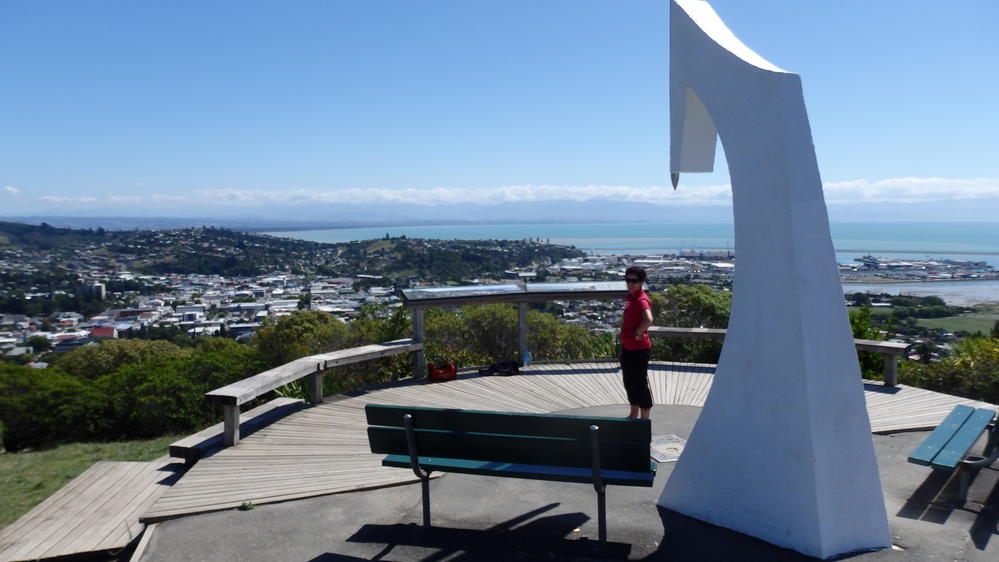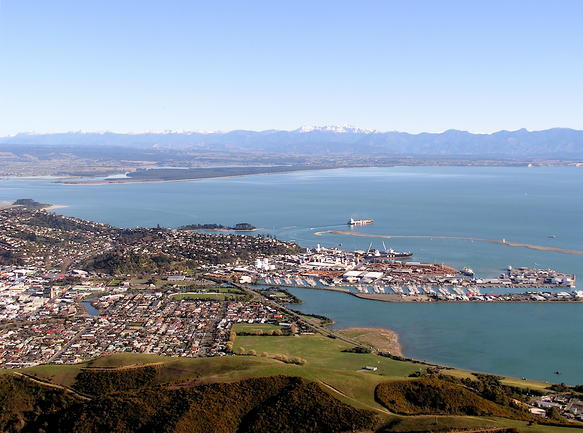Nelson, (Whakatū (Māori)) - City, New Zealand
Geographical Centre of New Zealand

Nickname(s): Top of the South, Sunny Nelson
Coordinates: 41°16′15″S 173°17′2″E Coordinates: 41°16′15″S 173°17′2″E
Settled by Europeans in 1841
Founded by Arthur Wakefield
Named for Horatio Nelson
Population (June 2016)
• Territorial 50,600
• Density 110/km2 (290/sq mi)
• Urban 65,700
Nelson is a city on the eastern shores of Tasman Bay. Nelson is the oldest city in the South Island and the second-oldest settled city in New Zealand. Nelson was established in 1841 and was proclaimed a city by royal charter in 1858.
Nelson city is bordered to the west and south-west by the Tasman District Council and the north-east, east and south-east by the Marlborough District Council. The city does not include Richmond, the area's second-largest settlement. Nelson City has a population of around 50,000, making it New Zealand's 12th most populous city and the geographical centre of New Zealand. When combined with the town of Richmond which has close to 14,000 residents, Nelson is ranked as New Zealand's 9th largest urban area by population.
Geography - the Geographical Centre of New Zealand
The Nelson region comprises two unitary authorities – Nelson City, administered by the Nelson City Council, and Tasman District, administered by the Tasman District Council, based in Richmond 15 kilometres (9 miles) to the southwest. It is between Marlborough, another unitary authority, to the east, and the West Coast Regional Council to the west - hence the "Top of the South" nick name.
The two local councils 'Nelson City Council' and 'Tasman District Council' work together on some of the regions major assets ie the jointly owned Port Nelson
Economy is based on the 'big five' industries; seafood, horticulture, forestry, farming and tourism.
For the second quarter in a row, Nelson was the country's top-performing region in the ASB/Main Report Regional Economic Scoreboard. Tasman slipped from second to fifth for the March quarter.
Construction is keeping Nelson at the top of the economic regional charts, but established industries like horticulture are expected to keep the Tasman District in the picture.
The scoreboard ranks the economic performance of New Zealand's 16 regional councils using the latest quarterly regional statistics on employment, construction, retail trade and house prices.
Booming tourism, horticulture, viticulture and construction drove Nelson's result.
Below is a list of some of the region's largest companies and employers:
- Regional airline Air Nelson has its headquarters and maintenance base at Nelson Airport.
- Japanese automobile manufacturer Honda has its New Zealand distribution centre in the Whakatu Industrial Estate in Stoke.
- Beverage company McCashins has a microbrewery in Stoke
- Sea Dragon Marine Oils has a refinery in Annesbrook.
- The Cawthron Institute has a research facility in The Wood with a focus on fisheries.
- Food manufacturer, the Talley's Group has processing facilities at Port Nelson & Port Motueka.
- The New Zealand King Salmon Company processes Chinook salmon at its factory in Annesbrook
- Nelson Pine Industries Established in 1986, Nelson Pine Industries is one of the world’s largest single site producers of medium density fibreboard. GoldenEdge MDF is exported to markets around the world.
- Carter Holt Harvey Mill - This Nelson site has over 200 employees and produces timber products including Laserframe and Pinex.
- Waimea Nurseries - is proud to be a leading producer for fruit, nut, berry and ornamental trees for the consumer market in New Zealand. These products are distributed through garden centres and chain stores nationwide, currently employs up to 130 people.
Port Nelson is the maritime gateway for the Nelson, Tasman and Marlborough regions and a vital hub for economic activity. Port Nelson is the biggest fishing port in Australasia.
Port Nelson is spending millions of dollars to stay competitive in a rapidly changing shipping industry. A three-year $60 million development is under way and includes a large new warehouse to support the region's burgeoning billion dollar wine industry.
Nelson MP Nick Smith said the report showed Nelson's economy was on a "postive roll". He said the strong economic performance included the lowest unemployment rate at just 2.8 per cent. Building data also showed commercial construction was at a record $70.5 million for the year, up 200 per cent. Residential construction was at $96 million, up 35 per cent.
Tourism
- National Parks - Nelson is surrounded by mountains on three sides with Tasman Bay on the other and the region is the gateway to Abel Tasman National Park, Kahurangi National Park, Lakes Rotoiti and Rotoroa in the Nelson Lakes National Park.
- Arts & Crafts
- Wineries & Craft Breweries
Due to a record number of passengers last year - Nelson Airport is investing in a new $32 million airport terminal. A record 865,023 passengers flew in and out of the terminal in the year to June, up 16 per cent from the 750,000 passengers last year, our personal target for next year is a million passengers.
Other assets to the region are the Trafalgar Park, Trafalgar Centre, Saxton Oval - which host many national and international sporting events including, NPC rugby, rugby League, Soccer and International Cricket events.
Climate
Nelson has a temperate oceanic climate, with mild winters and warm summers. Nelson has rainfall evenly distributed throughout the year and has fewer frosts due to the highly marine geography of New Zealand. Winter is the stormiest time, when gales and storms are more common. Nelson has one of the sunniest climates of all major New Zealand centres, earning the nickname 'Sunny Nelson' with an annual average total of over 2400 hours of sunshine. Great for the region's Horticulture, grapes, hops, apples and kiwifruit.
Richmond is officially the sunshine capital of New Zealand, beaming ahead of its nearest neighbour Nelson by more than 350 hours.

